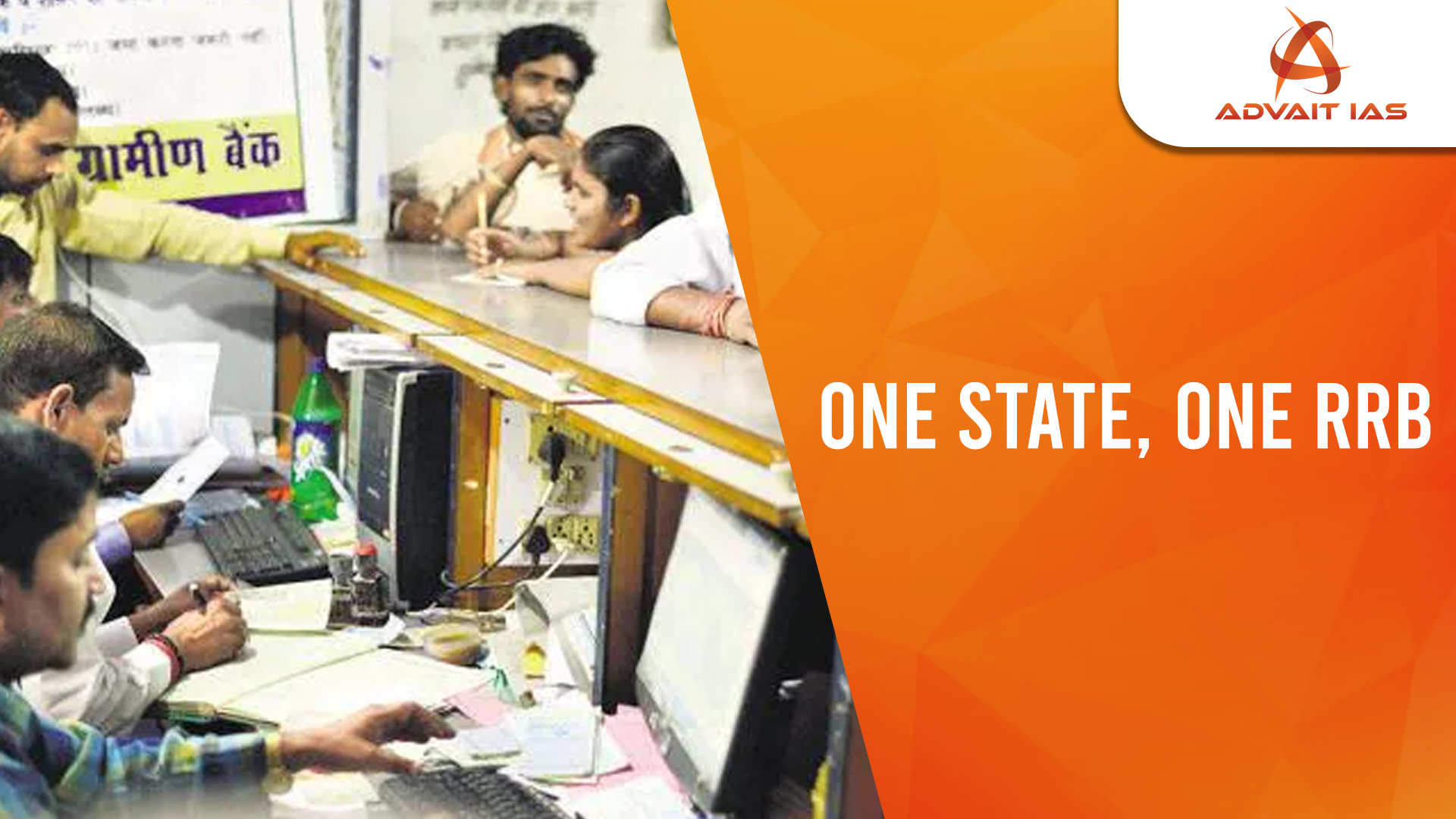The Indian government is set to implement the “One State, One RRB” policy.
Policy Objectives
- Consolidate the existing 43 Regional Rural Banks (RRBs) into 28.
- Enhance Operational Efficiency: Reduce redundancies and improve service quality.
- Cost Rationalisation: Achieve better cost management through consolidation.
- Strengthen Credit Flow: Boost credit availability in rural areas by fortifying RRBs’ financial strength.
About Regional Rural Banks (RRBs)
- Formation: Established through collaboration of the Central Government, State Governments, and Sponsoring Commercial Banks.
- Mission: Provide credit to underserved rural populations—small/marginal farmers, agricultural laborers, and weaker sections.
- Functions:
- Rural Credit: Mobilize financial resources and provide loans to rural areas.
- Government Operations: Disburse MGNREGA wages, pensions, etc.
- Para-Banking Services: Locker facilities, debit/credit cards, mobile/Internet banking, UPI, etc.
- Origin:
- Recommended by Narasimham Committee on Rural Credit (1975).
- Established under the RRB Act, 1976 (Ordinance passed on 26 Sept 1975).
- First RRB: Rathama Grameen Bank (established on 2 Oct 1975).
- Structure:
- Hybrid model combining cooperative and commercial bank
- Area of Operation: Limited to specific districts notified by the Government of India.
- Ownership:
- Central Government: 50%
- Sponsoring Bank: 35%
- State Government: 15%
- Regulation & Supervision:
- Regulated by: RBI
- Supervised by: NABARD
- Funding Sources:
- Owned funds, deposits, borrowings from NABARD, Sponsor Banks, SIDBI, and the National Housing Bank.
- Management:
- Board of Directors:
- 1 Chairman, 3 Central Govt-nominated Directors,
- 2 State Govt-nominated Directors, 3 Sponsor Bank-nominated Directors.
- Board of Directors:
- Priority Sector Lending (PSL):
- 75% of outstanding advances (higher than 40% for Scheduled Commercial Banks).
Capital Infusion for RRBs
- FY 2021-22: Government infused ₹5,445 crore over two years as growth capital.
- Purpose: Strengthen operational capabilities and promote development.
Recent Performance Highlights of RRBs
- Record Profit: ₹7,571 crore in FY 2023-24.
- Capital Adequacy Ratio: Reached 2% by March 31, 2024.
- GNPA (Gross Non-Performing Assets): At an all-time low of 1%, indicating improved asset quality.
Historical Context of RRB Consolidation
- RRBs Established: Under the RRB Act, 1976 to provide credit to small farmers, agricultural laborers, and rural artisans.
- Consolidation Timeline:
- 2004-05: Process began.
- 2020-21: Number reduced from 196 to 43 through three phases.
Amendments to the RRB Act (2015)
- Key Changes:
- Allowed RRBs to raise capital from sources beyond the Centre, states, and sponsor banks.
- Ownership Structure:
- Government: 50% stake.
- Sponsor Banks: 35% stake.
- State Governments: 15% stake.
Current RRB Network
- Operational Status (as of March 31, 2024):
- 43 RRBs across 22,069 branches in 26 states and 3 Union Territories.
- Coverage across 700 districts.
- Digital Initiatives: Many RRBs offering digital banking services to improve rural accessibility.
Implications of the “One State, One RRB” Policy
- Enhanced Service Delivery: Improved efficiency in operations and customer service.
- Financial Stability: Stronger balance sheets and better risk management.
- Rural Credit Growth: Increased credit flow to rural areas, supporting agriculture and rural development.
- Global Benchmark: Sets an example for efficient rural banking models globally.






